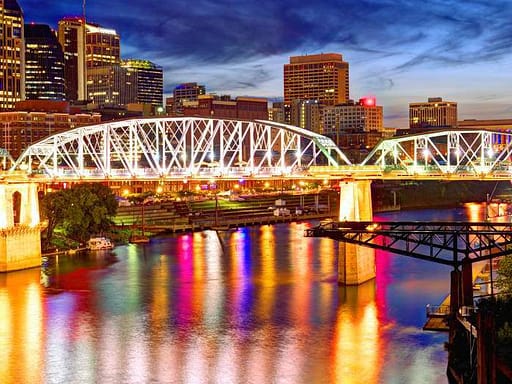Hidden Factors Affecting Urban Livability
When we think of livability, what comes to mind? Many would immediately mention common features like local amenities, public parks, efficient transportation, affordable housing, and vibrant cultural scenes. However, beyond these obvious markers, numerous subtle factors can quietly influence whether a city is truly livable. These hidden elements often have a significant impact on quality of life and can transform an average city into a place people are proud to call home. Understanding these lesser-known contributors to urban livability reveals the complexity of creating cities that are not just functional but also thriving.
We’ll take a look at some lesser-know, hidden factors that affect urban livability, diving into aspects such as social cohesion, mental health resources, environmental considerations, infrastructure planning, and more. Cities are more than the sum of their parts, and livability extends beyond what’s visible on the surface or in data.
The Social Fabric: Community and Belonging
A city’s livability isn’t just defined by its physical amenities but also by the relationships and sense of belonging that its residents experience. Urban areas that promote social cohesion tend to foster a sense of connection among residents, leading to a stronger community spirit. Social cohesion manifests in various ways, from active neighborhood associations and local events to the simple ability to interact with neighbors in a friendly, safe manner.
When people feel like they belong, they are more likely to engage in activities that support the health of their communities. This could include participating in local initiatives, frequenting nearby businesses, or even being more mindful of public spaces. Cities that invest in creating opportunities for these kinds of interactions — whether through public spaces, events, or local programs — see a marked increase in the quality of life for residents. A thriving social fabric reduces feelings of isolation, which are more common in large urban environments where it’s easy to feel lost amidst the bustle.
Further, community engagement directly impacts how safe people feel within their cities. Crime prevention strategies increasingly focus on fostering connections among residents, as people are more likely to look out for each other and report suspicious activities when they know their neighbors. This sense of belonging and trust becomes an invisible safety net that contributes to a city’s overall livability.
Mental Health and Wellbeing
An often-overlooked component of urban livability is the mental health of its population. Cities are known for their fast pace, which, while energizing, can also be overwhelming and stressful for residents. Urban environments that actively promote mental well-being are more likely to offer a better overall living experience.
Mental health services, support groups, and accessible counseling are crucial, but so are the design elements that help people feel mentally at ease. For instance, green spaces are proven to reduce stress and improve mental health. Cities that prioritize parks, tree-lined streets, and outdoor recreational areas see a significant improvement in the well-being of their residents.
Noise pollution, another subtle yet pervasive issue in urban areas, has a direct impact on mental health. Constant exposure to high levels of noise — whether from traffic, construction, or nightlife — can increase stress levels and disturb sleep. Cities that take measures to reduce noise pollution, such as implementing sound barriers, creating quiet zones, and using noise-dampening materials in construction, contribute to a more livable environment without residents even realizing the effort that goes into it.
Public art and cultural spaces can also play a surprising role in mental health. By offering a creative outlet or simply a moment of calm contemplation, these areas of urban life enhance livability by encouraging reflection, engagement, and a sense of identity.
Environmental Sustainability
Another hidden factor in urban livability is how cities manage their environmental impact. With climate change becoming an increasingly pressing issue, cities that invest in sustainability efforts stand out as more livable in the long term. Sustainable urban planning considers not just the present, but the future, ensuring that resources are used efficiently and responsibly.
Clean air and water are fundamental for a livable city, yet many urban centers struggle with pollution. Cities that prioritize renewable energy, low-emission public transport, and stringent pollution controls offer a healthier environment for residents. Likewise, waste management and recycling programs that are easy to access and well-publicized make it easier for residents to adopt sustainable practices.
Urban agriculture and community gardens, while less traditional, are becoming essential components of sustainable cities. These initiatives offer a green space and provide fresh, local produce, which can help mitigate urban food deserts. Furthermore, they serve as gathering spots that foster community spirit while promoting sustainable practices. Cities with a focus on environmental sustainability often attract residents who are not just concerned with today’s living conditions but the long-term viability of their home.
Transportation Beyond Efficiency
While public transportation is an obvious factor in a city’s livability, there are hidden nuances to consider. Efficient, reliable public transit is vital, but it’s also important to think about the overall experience of getting around the city. Factors such as accessibility for all residents, the integration of cycling and walking paths, and the availability of car-sharing programs or ride-hailing services are key components of a transportation system that enhances livability.
Consider the concept of “walkability” — a feature that many city dwellers cherish. Walkable cities provide easy access to essential services and leisure activities within a reasonable distance. But the quality of the walking experience matters too. Cities with well-maintained sidewalks, pedestrian-friendly intersections, and thoughtful urban planning that prioritizes human movement over vehicles offer a far more pleasant environment than those focused solely on cars. Similarly, bike-friendly cities that invest in protected lanes, bike-sharing stations, and safe routes to key destinations are generally seen as more livable.
For cities with a diverse population, transportation must cater to a variety of needs. This includes designing public spaces that are accessible for people with disabilities, ensuring that public transportation is affordable for low-income residents, and offering clear information about routes and services in multiple languages.
Urban Design and Architecture
A city’s design and architecture significantly contribute to how livable it feels, often in ways that are not immediately apparent. The layout of streets, the height of buildings, and the use of public space all play a part in how comfortable and appealing a city is for its residents. Human-scale architecture, where buildings and infrastructure are designed to meet the needs and experiences of people rather than just maximizing space or profit, creates more inviting urban environments.
Cities that encourage mixed-use development—where residential, commercial, and leisure spaces coexist—tend to foster a more vibrant and convenient lifestyle. This approach minimizes long commutes and allows for a richer urban experience, where residents can live, work, and play all in the same area.
Historic preservation also adds to a city’s livability, giving residents a sense of connection to their city’s past and its evolution. Urban environments that incorporate and celebrate their architectural heritage provide not only aesthetic appeal but also a unique character that enhances pride in the community.
Moreover, how cities use lighting can significantly impact the sense of safety and comfort after dark. Urban areas with well-lit streets and public spaces create environments where people feel safe to explore at any hour. Thoughtfully designed lighting can also highlight architectural beauty and create welcoming atmospheres in public areas.
Climate Resilience and Adaptation
With the growing impacts of climate change, cities that prepare for natural disasters and extreme weather are better positioned to remain livable in the future. Climate resilience might not be the first thing that comes to mind when thinking about livability, but it is becoming increasingly important, particularly in areas prone to flooding, hurricanes, or extreme heat.
Cities that invest in flood defenses, heat mitigation strategies like green roofs or reflective surfaces, and emergency response infrastructure ensure their residents are better protected from climate risks. Such forward-thinking initiatives may seem invisible to residents on a day-to-day basis but become crucial in times of crisis.
Urban resilience also includes how cities manage energy and water resources during extreme conditions. Cities that prioritize sustainable energy grids, diversified water sources, and emergency planning are safeguarding their future livability in an era of climate uncertainty.
Economic Opportunity and Mobility
Economic opportunities within a city greatly influence its livability, but the hidden factor here is economic mobility — the ability for residents to improve their financial situation over time. Cities that offer not only jobs but also a path to upward mobility through education, training, and access to resources, create environments where individuals and families can thrive.
Economic segregation, where wealth is concentrated in certain areas and poverty in others, can reduce a city’s overall livability by limiting opportunities for a large portion of its residents. Cities that provide affordable housing in mixed-income neighborhoods, equitable access to quality education, and job training programs are better equipped to foster long-term success for their populations.
Small businesses and entrepreneurship also play a key role in urban livability. A city that encourages and supports small, locally owned businesses creates a more diverse and dynamic economy, offering residents unique places to shop, dine, and work. This also contributes to the distinct character of the city, enhancing pride in local culture.
Safety Beyond Crime Rates
When considering livability, many people focus on crime rates as the ultimate measure of safety. While crime rates are certainly important, there are other aspects of safety that factor into how livable a city feels.
For example, traffic safety can have a significant impact on residents’ peace of mind, especially in cities where pedestrians and cyclists share space with motor vehicles. Urban areas that prioritize safe road crossings, protected bike lanes, and traffic calming measures contribute to a sense of security beyond just violent crime statistics.
Health and safety infrastructure, such as accessible healthcare facilities, well-maintained roads, and effective emergency services, are also crucial. A city where residents feel assured that they will be taken care of in the event of an accident or health issue offers a much higher quality of life. These infrastructure elements often operate in the background, unnoticed until they are needed, but their presence is a vital factor in urban livability.
Urban livability is far more complex than just green spaces and public transportation. The hidden factors that affect how livable a city is can be subtle but have a profound impact on the quality of life for residents. From










